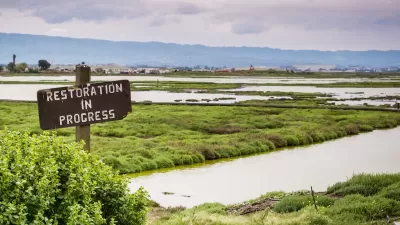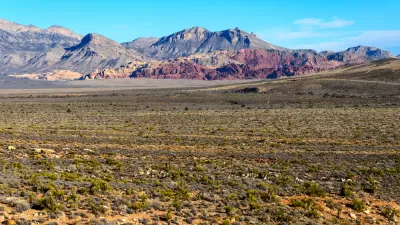Part literature review, part political appeal, this article makes the case for rethinking the concept of what makes plants native—especially in the face of climate change.

Erle C. Ellis writes of the scientific approach to conserving biodiversity as the footprint of human settlement spreads across the planet—an approach that requires several breaks from the status quo.
First Erle argues that cities are the most important location for the fight to conserve biodiversity: "As climate change, land use, pollution, and other anthropogenic forces displace wildlife from their historical habitats, urbanizing landscapes are increasingly where the conservation action is — and needs to be."
Then Earle sets about debunking a widely held assumption about the kinds of plants that comprise urban biodiversity:
Nevertheless, a focus on native plantings as the key to biodiversity conservation in urban areas can create more problems than it can solve. To begin with, the concept of “native species” itself can be the problem.
With a bit more detail:
To define a spatial limit where a species is “native” — and where it is not — when climate is changing so rapidly may already be more of a problem than a solution.
Instead of turning the built environment into a kind of museum for biodiversity, Earle suggests instead that it's time to "embrace a dynamic vision of what it means to be native — to belong in a place — whether it is urban, agricultural, semi-natural or wild."
FULL STORY: Cultures of nature: What does it mean to be native in the city?

Alabama: Trump Terminates Settlements for Black Communities Harmed By Raw Sewage
Trump deemed the landmark civil rights agreement “illegal DEI and environmental justice policy.”

Planetizen Federal Action Tracker
A weekly monitor of how Trump’s orders and actions are impacting planners and planning in America.

The 120 Year Old Tiny Home Villages That Sheltered San Francisco’s Earthquake Refugees
More than a century ago, San Francisco mobilized to house thousands of residents displaced by the 1906 earthquake. Could their strategy offer a model for the present?

In Both Crashes and Crime, Public Transportation is Far Safer than Driving
Contrary to popular assumptions, public transportation has far lower crash and crime rates than automobile travel. For safer communities, improve and encourage transit travel.

Report: Zoning Reforms Should Complement Nashville’s Ambitious Transit Plan
Without reform, restrictive zoning codes will limit the impact of the city’s planned transit expansion and could exclude some of the residents who depend on transit the most.

Judge Orders Release of Frozen IRA, IIJA Funding
The decision is a victory for environmental groups who charged that freezing funds for critical infrastructure and disaster response programs caused “real and irreparable harm” to communities.
Urban Design for Planners 1: Software Tools
This six-course series explores essential urban design concepts using open source software and equips planners with the tools they need to participate fully in the urban design process.
Planning for Universal Design
Learn the tools for implementing Universal Design in planning regulations.
Clanton & Associates, Inc.
Jessamine County Fiscal Court
Institute for Housing and Urban Development Studies (IHS)
City of Grandview
Harvard GSD Executive Education
Toledo-Lucas County Plan Commissions
Salt Lake City
NYU Wagner Graduate School of Public Service





























